We have been driving Toyota’s Premium Hatchback for a couple of days now. Here is what we felt about the rebadged Baleno.
The very first question that comes to mind is, Why is Toyota selling a Baleno? The answer is simple: Toyota and Suzuki are both Japanese OEMs, and currently they are under a global partnership to share products and technology to maximize the worldwide portfolio of both companies. Initial development costs are very much nonexistent when a product is shared, with some visual tweaks among the two. Toyota managed to sell 4,932 units of Glanza in August 2023, which is a pretty decent number considering Toyota’s own Etios Liva had never sold in such numbers in its life span. Both Maruti and Toyota are known for their reliable products, while Toyota is also famous for its solid build. Although this is not the case with the Glanza because the car was originally developed and manufactured by Maruti Suzuki and thus carries Suzuki’s light body character.
Exterior Design
When Toyota borrowed the prefacelift Baleno, they did nothing to make it look like a Toyota car, and the car appeared completely similar to the Baleno. But this time Toyota has worked enough to give it a Toyota look. The front bumper carries Toyota’s signature grill design. With chorme lip-carring the Toyota logo. Headlamps are also different and carry L-shaped LED daytime running lights. The lower part of the bumper houses a fog lamp and has C-shaped chrome elements that just make the lower part look more bulky and solid. Going further lower, a hefty fiber portion is used. It looks very classy, but the only problem with it is that it reduces the approach angle of the car. Obviously, it is not an off-road car, but at many instances, we found that it could touch the ground, going steep down in a pothole, or something like that.

The side profile of the car is completely similar to that of the Baleno, with the only noticeable change being the alloy wheels. We prefer these alloys over the alloys in Baleno.
As far as sheer dimensions are concerned, the length of the car is 3990 mm, which is 5 mm shorter than the earlier car, 1745 mm wide, and 1500 mm high. Wheelbase is 2520 mm.
Suzuki claims that they have made structural changes in the Baleno, which means the same changes are made in the Glanza as well, resulting in an overall heavier car compared to the previous model. To be precise, the variant we drove is 25 kg heavier than the similar CVT variant of the older Glanza, while the maximum gain goes up to 65 kg for the top manual variant.
Interior
In the interior, Toyota has made changes in terms of color. The upper part of the dashboard is black, while the lower portion is beige. The brighter beige color makes the interiors look spacious and airy. In between there is a glossy piano black insert with silver highlights around the ac vents. The flat-bottom steering comes straight from the Baleno with the Toyota logo, though. In the center, you get a 9-inch touchscreen infotainment system.
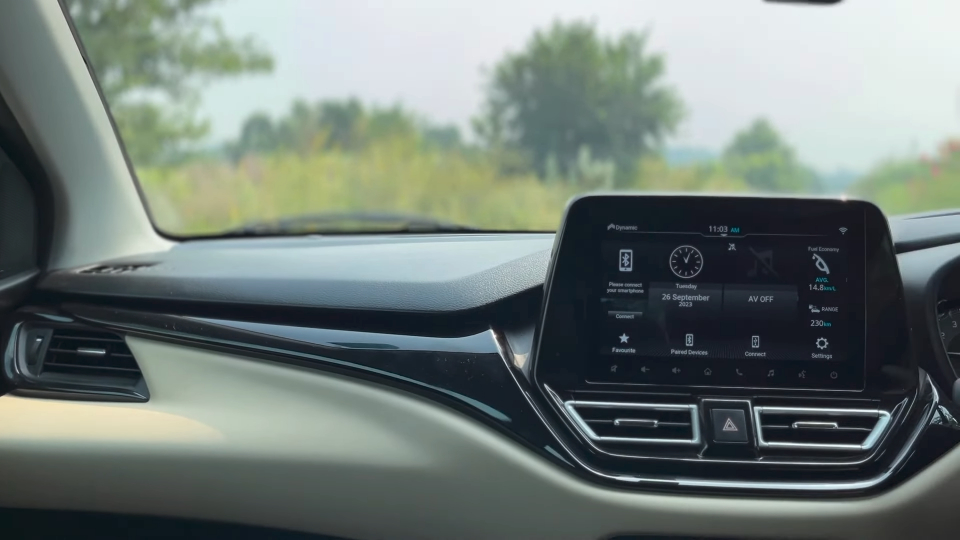
The climate control unit is also new and very sleek to use, with a tactile feel. The control buttons are all solidly built, and thank God there are no gimmicky touch buttons. You become used to these controls in very little time.
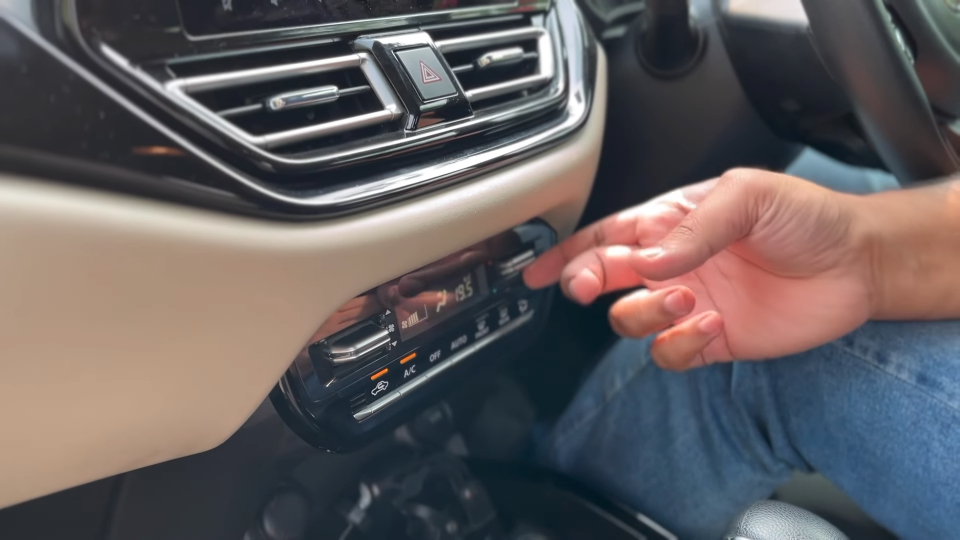
One important issue we noticed, especially for taller drivers, is that the gap between the IRVM and the touchscreen unit is very small, which hampers visibility when you try to look out on the lower left front side of the car. This is the same issue we faced in Fronx. Shorter drivers will find it just okay. The front glass area is also not large compared to other cars, so that’s an issue.
Features
Glanza is loaded with all the bells and whistles. It comes with a 360-degree camera in the top V variant. The camera quality is okay, but not very high resolution. It also comes with a pop-up heads-up display, which we find of not much use but any way it is there. One important feature Toyota offers in the top variant is UV Protect Glass, which helps reduce cabin heat in hot summers.

The infotainment unit comes with Android Auto, Apple Car Play, voice commands, and connected car tech. Talking about the touchscreen, the brightness is decent—not very good, but okay. Touch response is fast, and there is no lag. The sound quality is not as crisp as Tata’s speaker system or even the i20. The steering is equipped with both tilt and telescopic functions, so getting the best driving position is easy in this car. It also gets rear ac vents and charging ports, but misses out on the rear center armrest and center passenger headrest.
Space
At the front, the seat bolstering is adequate, and you feel comfortable for longer journeys. Headroom can be a little tight for people over 6 feet tall, both at the front and rear. Space at the rear is also adequate, and leg room is not a problem at all. Three passengers can sit at the rear, but it is not as comfortable as in the i20. The boot space of the car was lowered from the previous version and now stands at 318 liters, as opposed to 339 in the earlier car. Loading and unloading can be cumbersome for heavy items, as the loading lip is a little high. For maximum utility, Toyota offers a rear seat with a 60:40 split feature, and you can increase the boot space by folding it.

Safety
Neither the Baleno nor the Glanza have been tested by Global NCAP as of now, and with the launch of BNCAP and GNCAP going out of the picture, we expect both Maruti Suzuk and Toyota to send their cars for safety assessments. As far as safety features are concerned, Glanza comes with ABS, EBD, Brake Assist, ESP, Hill Hold, and other safety tech as standard. However, only the top two G and V come loaded with side and curtain airbags (6 airbags), and the lower models only come with standard front airbags. Isofix is standard, though. Auto headlamps with the Follow Me Home function are also limited to the top two variants.
Engine and Drive Experience
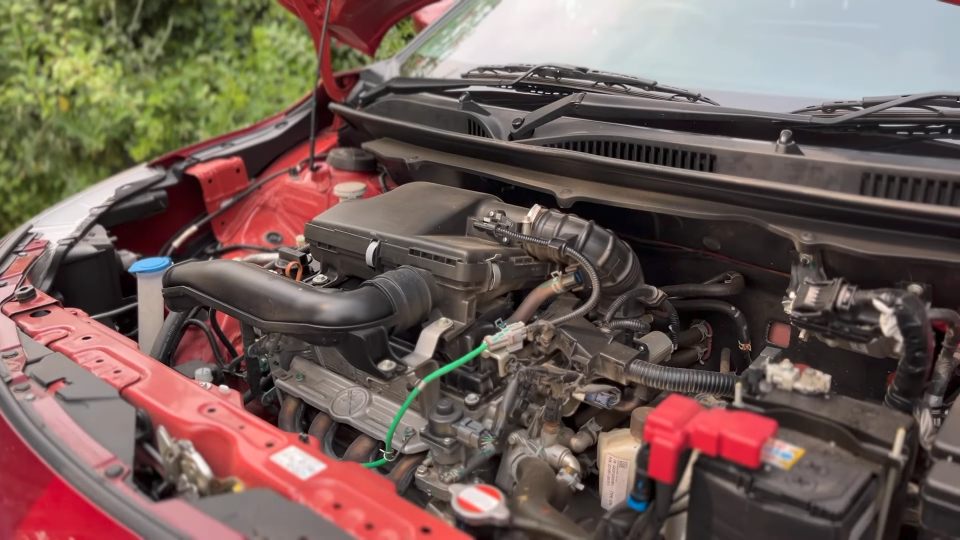
Glanza shares its engine with the Baleno, and the 1.2-liter unit is a new K12N engine. It produces 90 hp of peak power and 113 Nm of torque. The engine is super refined, but the insulation is not that great, due to which you hear a little bit of engine noise at idle. The engine is mated to either a 5-speed manual transmission or a 5-speed AMT. The prefacelifted car came with a CVT, but now Toyota has ditched that gearbox in favor of fuel efficiency, and that shows. The new 5-speed AMT is claimed to have a fuel efficiency of 22.95 km/l, while the manual comes with a claimed mileage of 22.35 km/l. Our test car is equipped with the AMT gearbox, and we can tell you that the mileage this car delivers is really commendable. With all the stop and go, we managed to see 15 kmpl on the cluster, going well above 18 kmpl on open highways. The car comes with an idle start-stop function, which is very irritating and intrusive; it shuts the engine off immediately when you stop. On hot summer days, this feature can be cumbersome, and the problem is that it can't be permanently switched off.
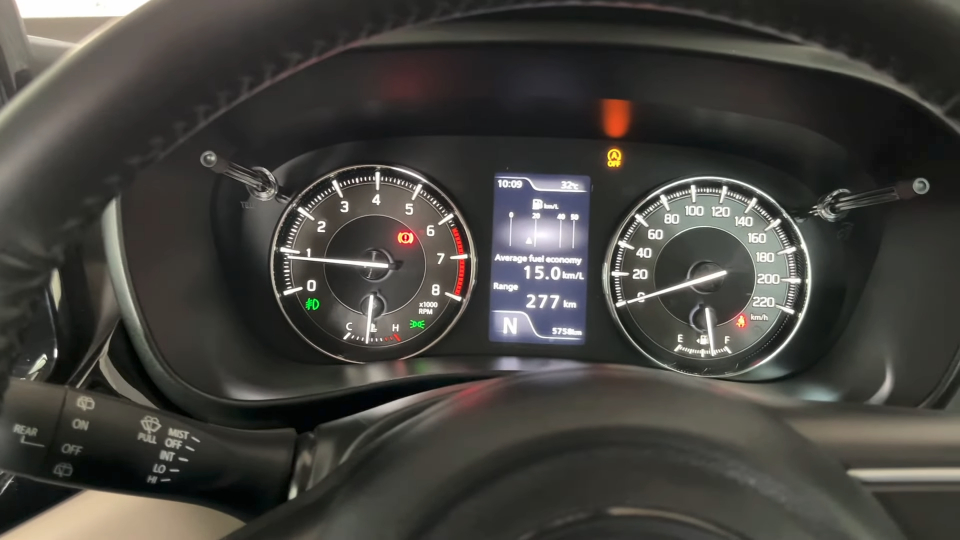
The engine performs effortlessly, and the AMT is tuned perfectly for day-to-day driving. Your left leg is always free, and that is a boon in cities like Gurgaon and Delhi, where traffic jams are part of life. If you want very spirited driving from the car, then the AMT is not made for you, and you better go with the manual transmission. Still, the pickup is brisk, and the car never feels under-powered. You will never miss a turbo engine. We even managed wheel spin on the AMT car.
The steering is not very feedback-rich and has a decent amount of connection with the front wheels. Self-centering is sufficient, unlike some Maruti cars, which came with no self-centering whatsoever. The handling is decent, and the suspension glides over most of the road undulations very easily. However, we feel that Fronx comes with better suspension tuning and also has more appeal. The brake bite is sharp and doesn’t feel wooden, the car stops in straight line. Tyres offer great grip on road.
Verdict
Both Baleno and Glanza sell like hot cakes, and combined figures go past 20,000 units every month. The most important thing about these cars is their no-nonsense character. Glanza also comes with a 3-year or 3-lakh-kilometer warranty, which is segment-best. If you want to avoid the crowds at the Maruti Outlets and Service Stations, the Glanza comes out to be the best choice. Yes, we don’t know how safe this car is, but hopefully in the coming days, BNCAP will assess it and a clear picture will come out. Starting at just Rs 6,81,000 for the petrol version and Rs 8,60,000 for the CNG model, the Glanza offers great value for your money. The range goes up to Rs 9,99,900 for the top V AMT that comes loaded with all bells and whistles.
(All prices are ex-showroom Delhi.)
| Previous Review | Next Review |
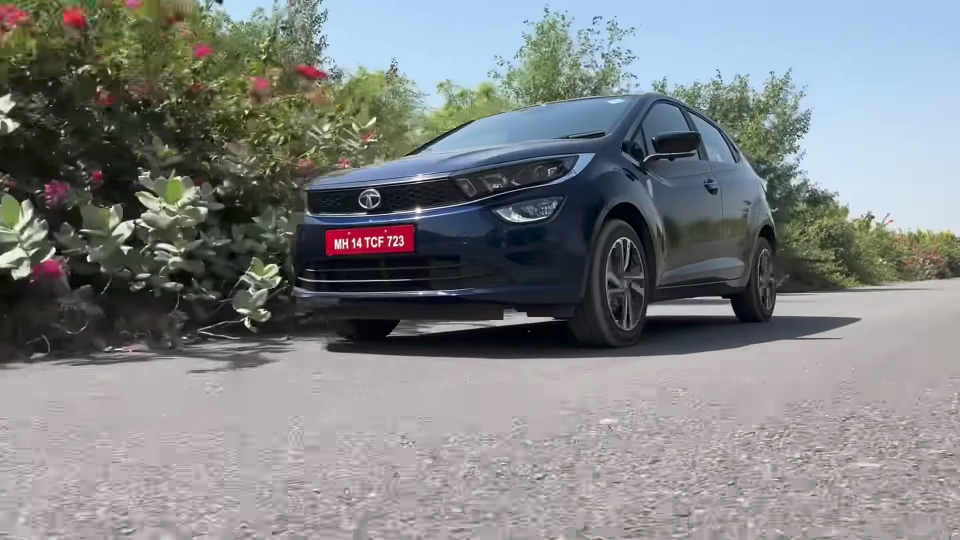 Tata Altroz CNG Review: Worth the money or not? Tata Altroz CNG Review: Worth the money or not? |
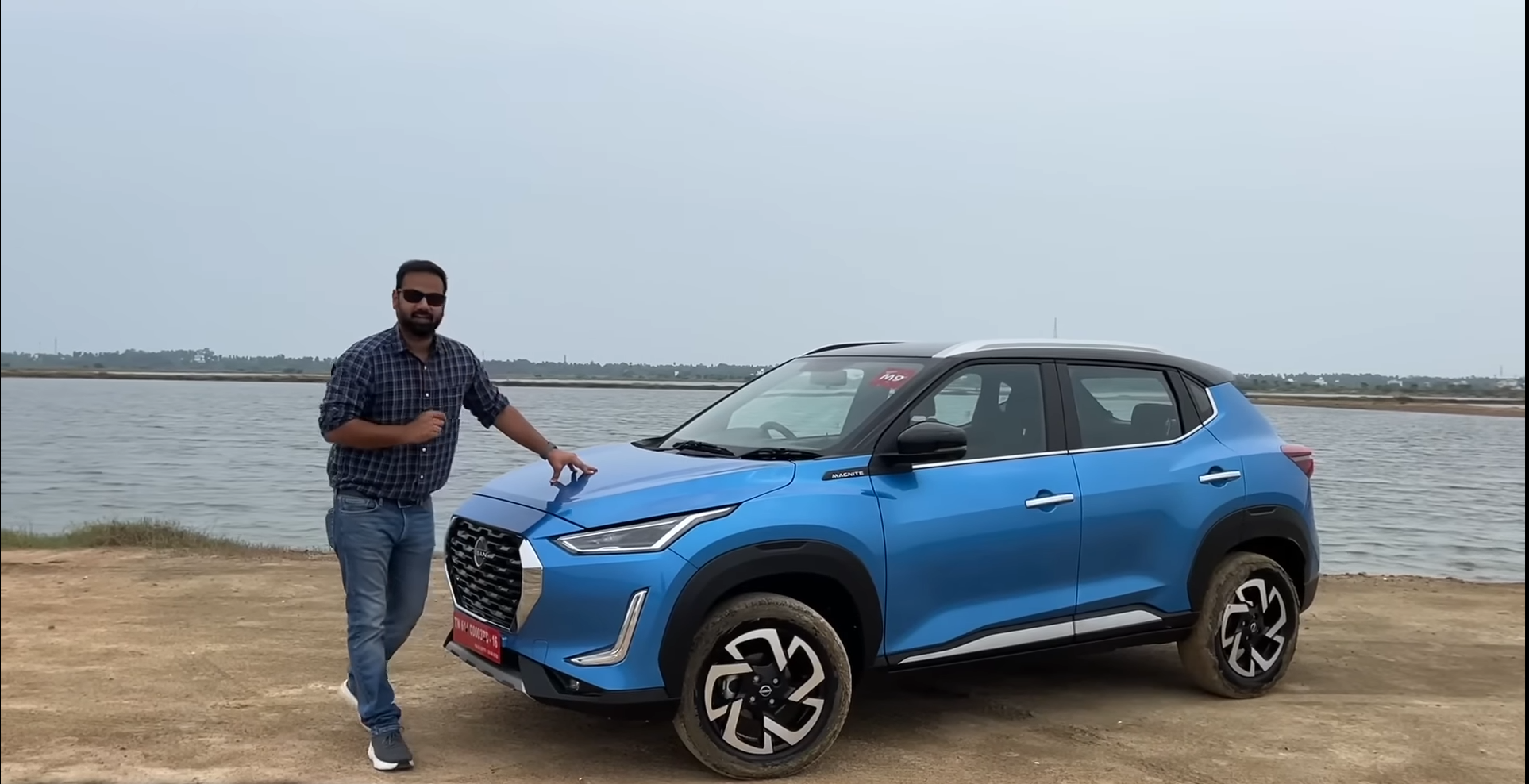 Nissan Magnite AMT Drive Review; Launched at Rs. 6.50 lakh
Nissan Magnite AMT Drive Review; Launched at Rs. 6.50 lakh |